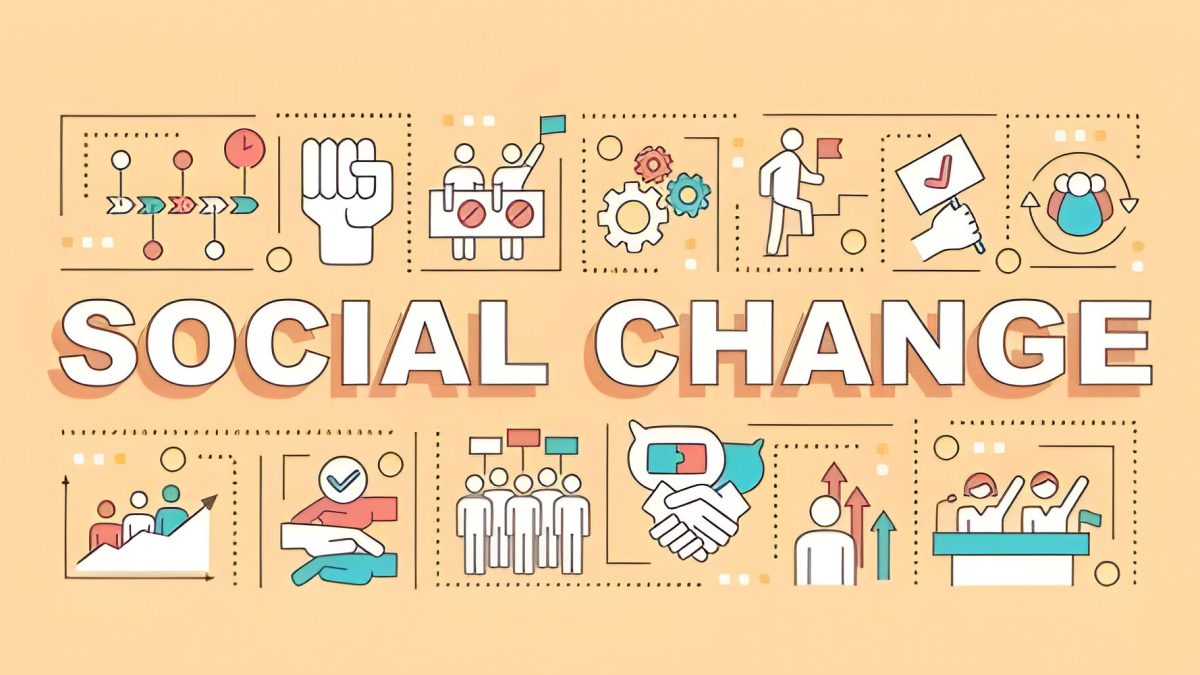Social Change Process

Photo Credit : BSD Studio/Shutterstock
Social change is a change in societal habits, culture, and social structures resulting from historical processes (Ogburn, 1964). This emphasizes that changes, especially behavioral changes occurring within society, are the result of interactions within the social structure, habits, and culture, and are not passed down through genetic processes.
In social change, the transformation process can be observed through the values, norms, and social structures of society, which can occur gradually (planned) or suddenly, but impact various aspects of life. Several factors that may cause these changes include technological shifts, sociocultural interactions within society, political changes, economic shifts, and changes in demographics and geography.
As a nation actively engaged in development, Indonesia has made numerous changes in efforts to improve the welfare of its people. We can see how the government's efforts in eradicating illiteracy through the education sector by improving quality with interactive and adaptive teaching methods. Additionally, educational accessibility through technology with online distance learning extends to a broader community, thus providing opportunities for improving qualifications and skills. Technology in education also aids in the rapid, widespread, and real-time dissemination of development information. Naturally, this can increase public awareness of the developmental needs required at the grassroots level. Furthermore, it motivates the community to get involved and participate in development. One important point to emphasize is that technological contributions also offer opportunities for collaboration across all sectors of society and government.
Communities in various literatures are stated to have a very significant role in the process of social change. As agents of change, communities often participate in addressing social problems faced by society, helping to raise awareness and becoming problem solvers in existing issues. Social change is generally preceded by feelings of dissatisfaction, unmet needs, and inequality towards environmental situations that occur, which if unresolved can lead to tension or even conflict. This then raises awareness in individuals, groups, or communities to make adjustments and improvements, through mobilization, protests, campaigns, or mass actions that demand changes, improvements, or even the implementation of changes to issues such as the creation of new policies, restructuring, and adaptation to the adoption of new activity practices.
In practice, the process of social change can proceed linearly, sequentially, or otherwise. However, it should be noted that in the process, interactions that occur can be repetitive. It all depends on the speed, readiness, and smoothness of all elements involved in the change process.
The primary task of communities, as we know, is to empower their people. Here, communities play a crucial role in controlling the lives of community members, making decisions about life, changing attitudes and behaviors to be developed, including involving owned elements and maximizing their resources.
However, communities sometimes face challenges due to limited resources including financial capabilities, infrastructure, and human resources, which can hinder the community's ability to contribute to the social change process. Linked with human resources, this indicates a low awareness among community members of the importance of their participation and involvement in the development process. In some cases, community members may be aware of the challenges faced, but structural and systemic challenges and the still prevalent belief that these problems are the responsibility of others outside themselves and their group, thus relying on external parties to resolve them. Here, the role of the community becomes important in providing education about the importance of participation to achieve common goals. Concerning structure and system, this must also be considered, as it sometimes becomes an obstacle, such as the existence of norms and stigmas that may not support change. In addition, institutional barriers can also hinder the social change process. These challenges can certainly be faced if the community has both internal and external support, allowing the change process to be carried out together through collaboration.
-Diana Anggraeni

